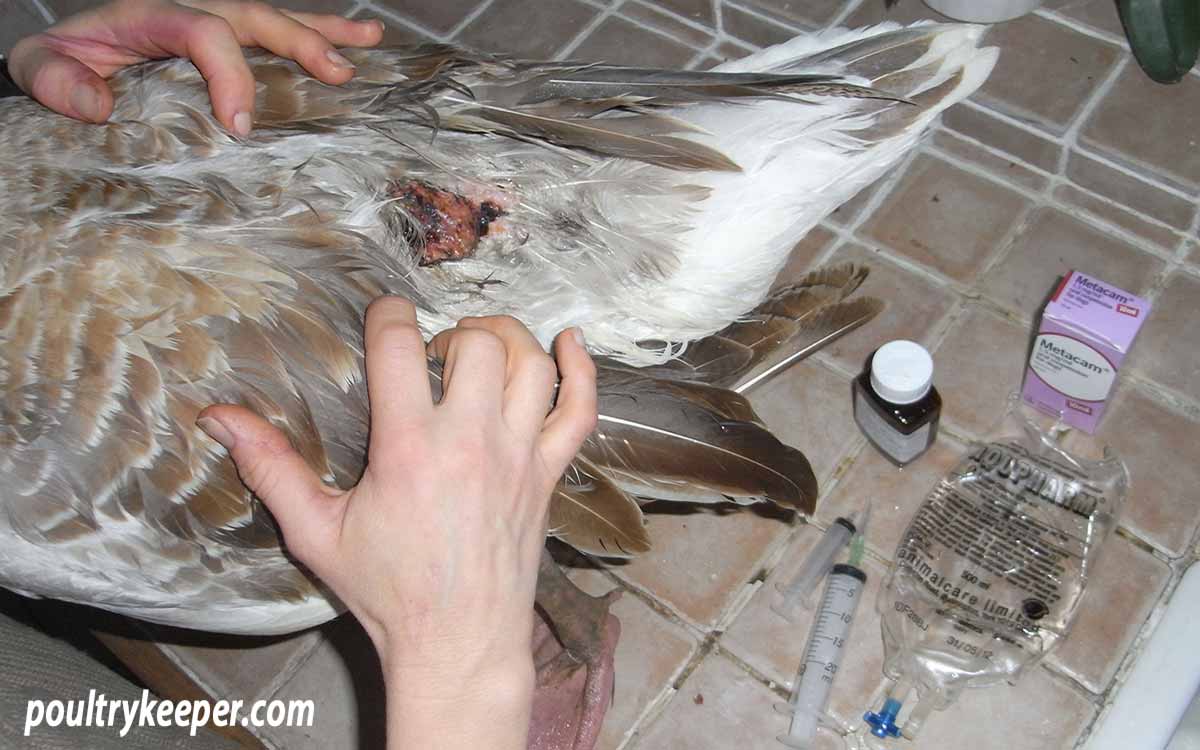
Small scratches and abrasions will usually heal naturally. Severe open wounds and bites require a veterinarian’s help and often, antibiotics, but often you can take care of small injuries at home.
Some small open wounds can be taken care of immediately without putting the bird through the stress of going to the vets. I have seen a few chicken wounds caused by spurs from roosters and chickens that have got caught in a fence.
Injuries caused by a fox or dog bite, often require antibiotics, since the puncture wounds from teeth can quickly get infected. Even then, there is a strong chance of losing a bird.
I have provided information on stitching since I have heard from smallholders and experienced poultry keepers who have stitched wounds themselves. Still, I strongly recommend you leave this for a vet.
All of my successful cases have been leaving a wound open to heal (and over the last 15 years, I have only had a handful, so I am by no means an expert) and I will explain why in a moment.
Open wounds that do not require stitches
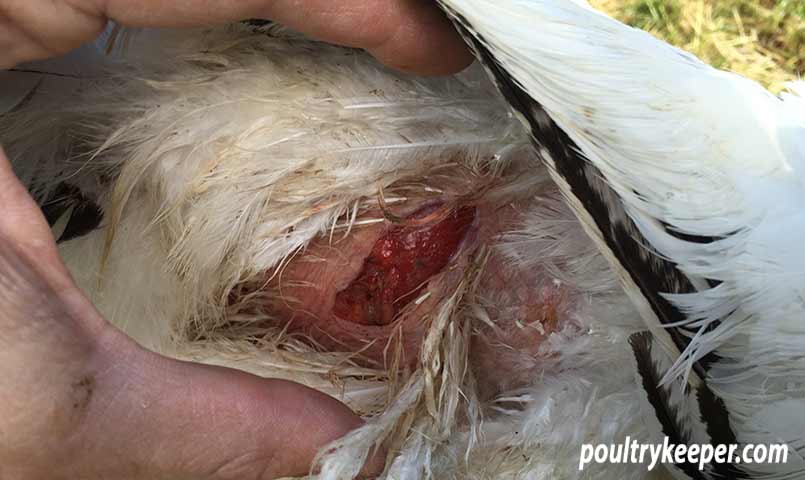
- Hold a clean piece of lintless cloth or gauze over the wound.
- Trim feathers away from the edge of the wound.
- Wash the wound with warm, soapy water. This can be un-perfumed hand soap. Rinse well with clean, warm water.
- Trim away any loose bits of skin that will not heal with a pair of sharp, sterilised scissors. You can sterilise implements like this, under boiling water.
- Wash the wound with weak salty water daily to keep it clean and moist. I use a syringe without the needle, to apply a bit of pressure from the spray to get right into the wound’s edges.
- Apply antibacterial ointment daily to help keep the wound free from bacteria.
Do not try to close the wound or cover it. The aim is to dry out the wound slowly and then for a new skin layer to form, from the inside-out, pushing OUT any bacteria. In the chicken wound shown above, it healed within a matter of days. Stitching a wound like this is more likely to trap bacteria inside the injury, causing infection.
Dog bite wound example
One of our Brecon Buff geese was bitten on his back, causing a nasty injury with puncture wounds from the dog’s teeth. In the case of dog or fox bites, there is even more risk of infection, so I decided to take him to the vet.
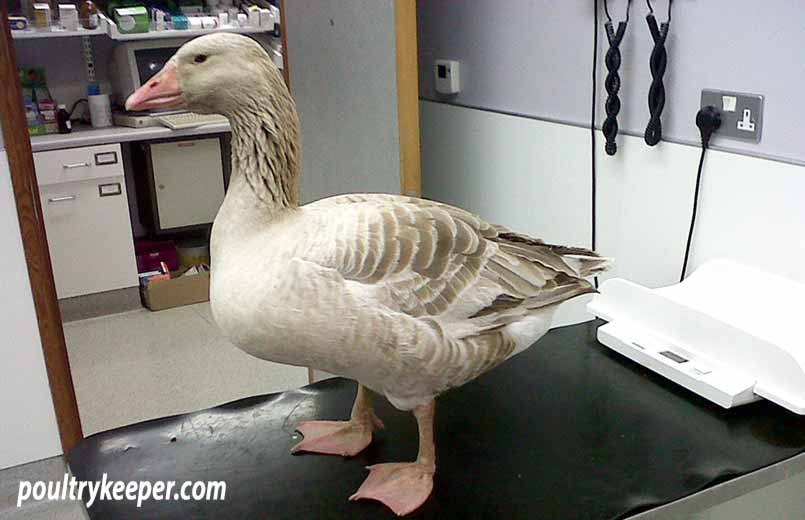
The treatment was straightforward but there is a risk that infection would kill the goose. The wound was cleaned up and sterilised by the vet and he was given an antibiotic injection.
I took care of the goose for the next couple of weeks at home.
Again, as I mentioned already, an open wound like this needs to heal from the inside-out. To do this, I kept the surface of the outside of the wound moist and clean by squirting saline solution over the surface of the wound twice daily using a syringe.
I administered a painkiller and antibiotics orally with a syringe to help prevent infection.
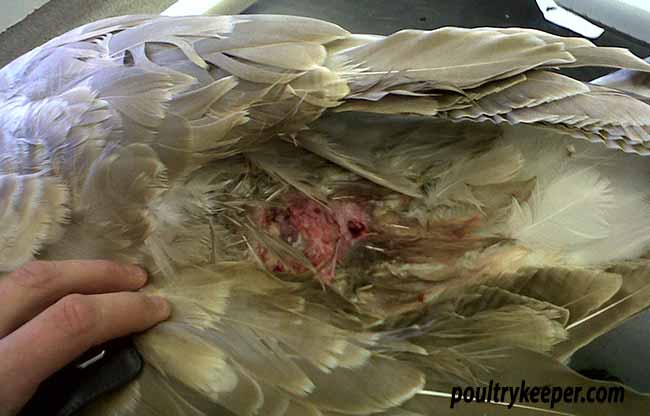
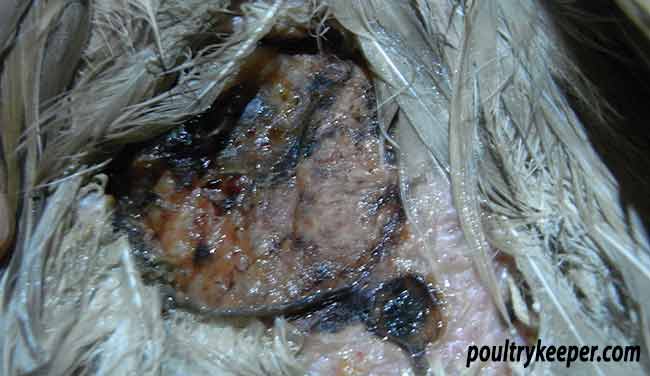
Shock
If the bird is in shock after its ordeal, your vet will probably prescribe a pain-killer to help the recovery process. Metacam for example, (also used for cats and dogs) may be prescribed by your vet and you can then continue to give this orally at regular intervals with a syringe over the course of a few days.
Antibiotics to treat infection
This is one of the most important things for bad wounds. Most skin tear wounds will heal – if the bird dies, it will usually be because of infection getting in, so the sooner you can get the bird to a vet to get some antibiotics prescribed, the better.
Ask your vet about injecting antibiotics such as Tylan or Baytril. Amoxypen, another long-lasting, broad-spectrum antibiotic, is also sometimes injected and tackles a different set of bacteria.
You can also continue a course of Tylan soluble or Baytril Oral at home if your vet decides to prescribe this too. The vet will show you how to administer this.
By the way – my Brecon Buff goose in the pictures made a full recovery!
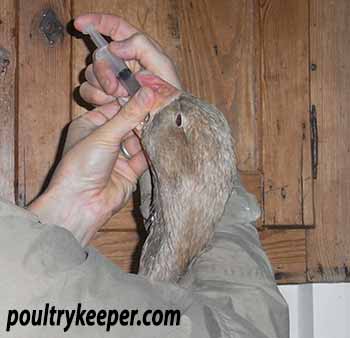
Open wounds that require stitches
I am not keen on stitiching a wound, as I mentioned above, it can do more harm than good by trapping bacteria inside the wound, causing infection and death but there may be no choice if it’s a serious wound.
If an open wound is ‘gaping’, is deep, or has had large patches of skin removed, stitches may be required and you should really seek the help of a veterinarian!
Suture needles and silk thread are required for stitching although a sterilised sewing needle and white thread can be used in an emergency for surface stitching. Following on from the trimming away loose bits of skin as described above:
- Stitches should go through the skin but no deeper than 1mm.
- They should be sewn 3mm apart and pulled taut.
- The skin should be pulled together but not so tight that the skin puckers.
- Stitches should be cut and pulled out in 4 to 5 days.
- An antibacterial ointment can be applied daily over the surface of the wound to keep it free from bacteria.




